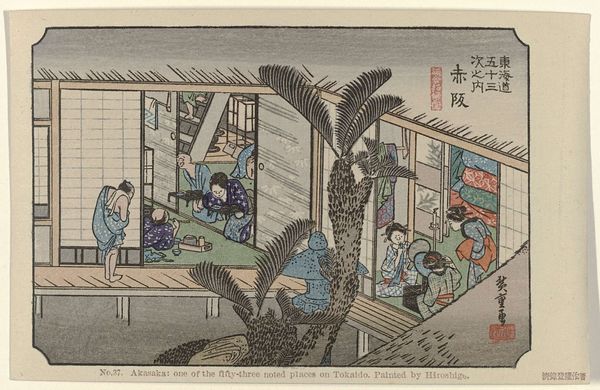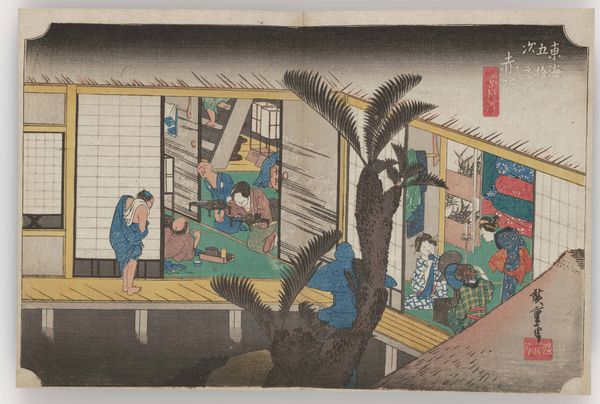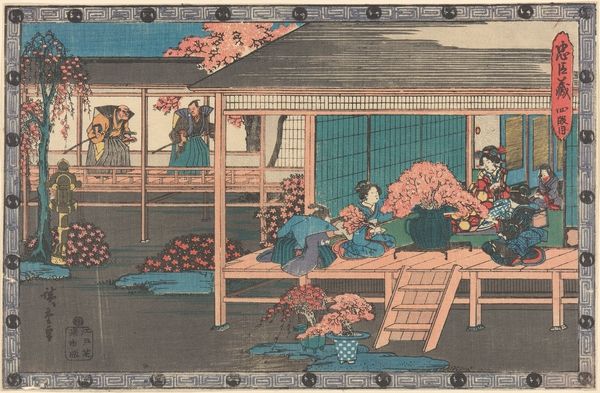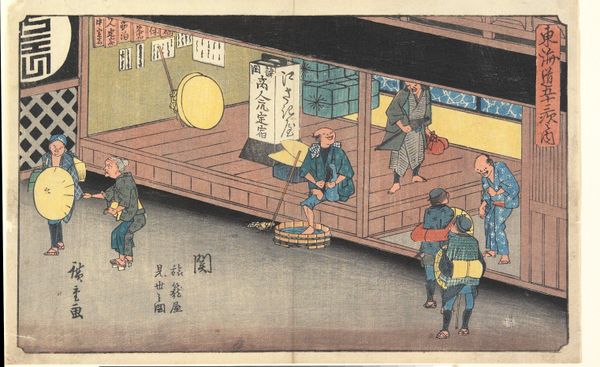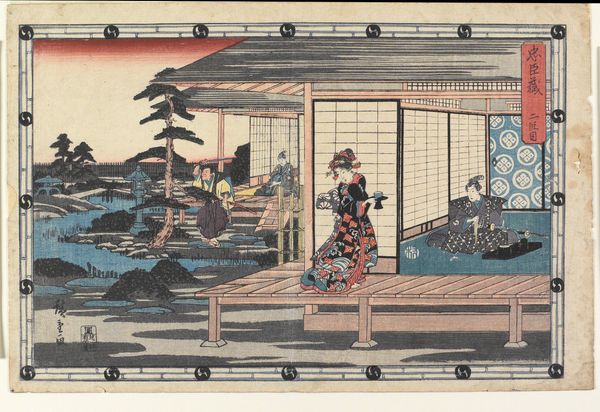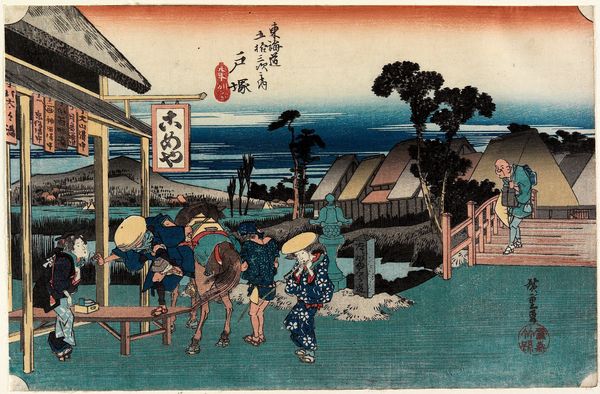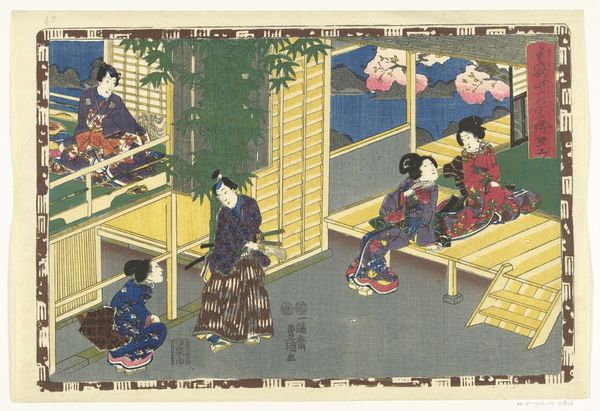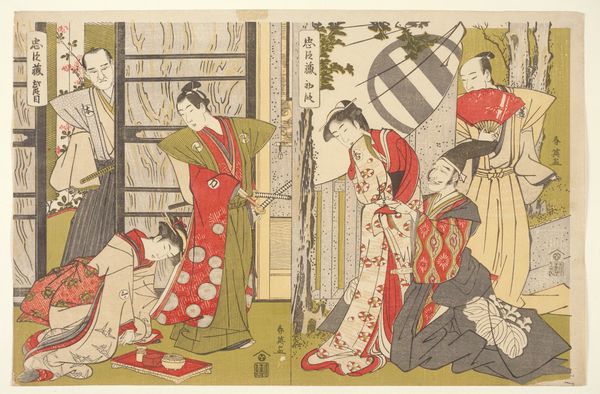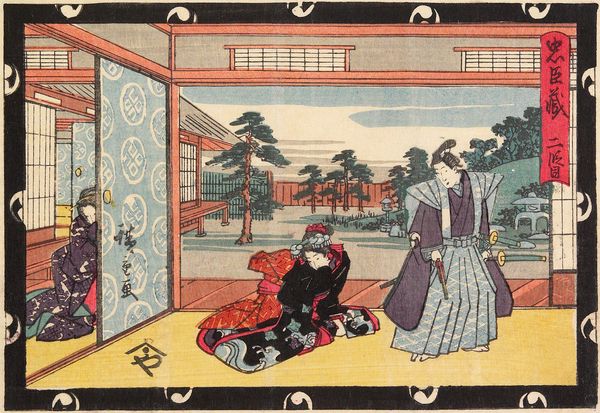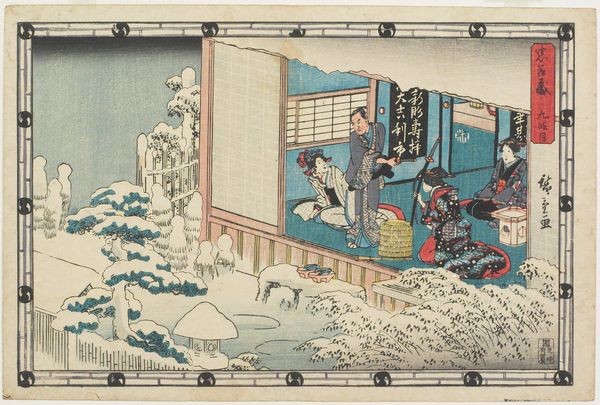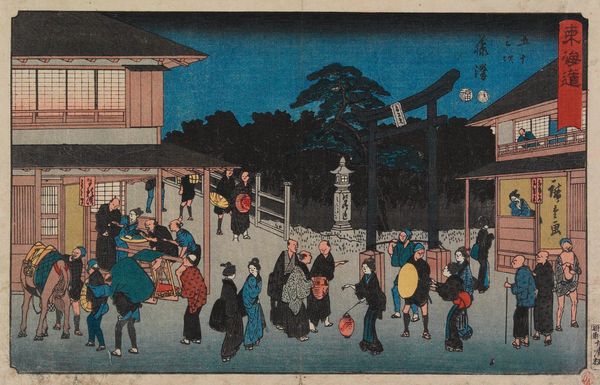
print, ink, woodblock-print
# print
#
asian-art
#
landscape
#
ukiyo-e
#
ink
#
woodblock-print
#
genre-painting
Dimensions: 9 × 13 9/16 in. (22.9 × 34.4 cm) (image, sheet, horizontal ōban)
Copyright: Public Domain
Curator: This is Utagawa Hiroshige's woodblock print "Akasaka," created around 1832-1833, a gem from the Minneapolis Institute of Art. Editor: It feels like a stolen moment. The somber blues and grays evoke a kind of voyeuristic intimacy, a glimpse into everyday lives unfolding within those layered spaces. Curator: Exactly. Hiroshige excels at depicting the mundane elevated through meticulous detail and composition. Here, the station of Akasaka is rendered not as a bustling thoroughfare, but as a series of enclosed, almost secretive, scenes. Notice the intricate details in the architecture and the placement of the figures within them. Editor: Those details feel significant, laden with the weight of social structure. We see a class disparity played out in the composition—are those travelers inside being attended to while the figure on the far left seems almost excluded from that interior world? The tree partially obscuring the view almost functions like a barrier. Curator: The tree’s presence is significant, as are the interiors, referencing a connection between nature and the constructed spaces, both physically intertwined and separate worlds of refuge and exposure. You might see a tension, as you suggested, or perhaps just differing spheres of activity linked through shared space. Consider, though, that even in ukiyo-e prints depicting pleasure districts, there is a focus on structure. This piece seems keen on showing interconnectedness within a rigid environment. Editor: I see your point about interconnectedness. Yet I'm still drawn to how the layers create this palpable sense of social division, reflecting the highly stratified Edo society. It speaks volumes about access and the visibility of certain experiences while obscuring others. Even within a shared landscape, worlds exist apart. Curator: These prints offer layered readings because Hiroshige, though documenting famous scenes along the Tōkaidō road, subtly weaves personal observations and critiques within his landscape depictions. It’s never just a pretty picture, but a narrative of the human condition expressed through subtle visual codes. Editor: Which is why a seemingly simple genre scene holds such power. It reminds us that the past, meticulously captured in these prints, holds a mirror to our present, reflecting ongoing power dynamics in public and private spaces. Curator: Absolutely, it’s about unraveling those hidden layers and finding our own reflections in the imagery. Editor: It leaves me wondering, what haven't we seen in the shadows?
Comments
No comments
Be the first to comment and join the conversation on the ultimate creative platform.
